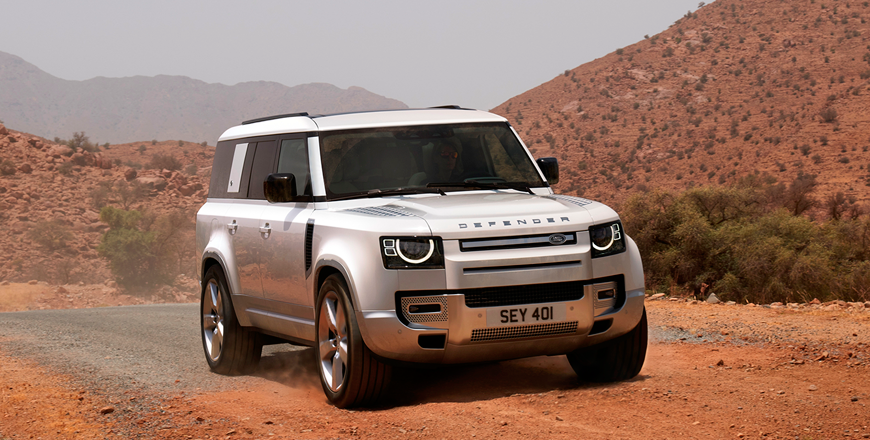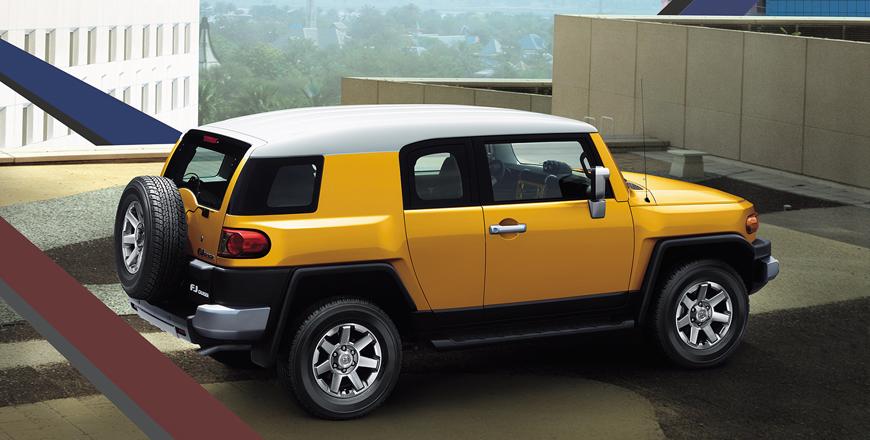You are here
Land Rover Defender 130 P400: Extended expeditions
By Ghaith Madadha - Jul 17,2023 - Last updated at Jul 17,2023

Photos courtesy of Land Rover
A highly stylised and modern take on Land Rover’s defining and utilitarian off-roader, the new Defender arrived in 2019 as an altogether different proposition to its predecessor. A more refined and practical SUV in the vein of the old Discovery, albeit with a retro-inspired Defender styling nods, it trades a ladder-frame chassis and live axles for monocoque construction, independent suspension and plenty of luxury and tech, and was sure to ruffle feathers among the faithful, even as it appeals to a wider client base.
Gainly gains
Initially offered in short wheelbase three-door ‘90’ or long wheelbase five-door ‘110’ versions, the Defender line gained its extended ‘130’ version in 2022. Sharing the same stylised retro-futuristic design cues, clamshell bonnet, straight lines, rounded edges and near equal width to height ratio, the 130 also shares the same wheelbase as the 110. It gains its added length from an extended rear overhang, which contrasts with its short front overhang for a more classically proportioned, albeit noticeably long, silhouette with a more rearward visual weighting.
Available with a choice of numerous petrol and diesel engines, the driven mid-range Defender P130 P400 is, however, probably the best compromise for refinement, ability and efficiency. With a new silky smooth turbocharged 3-litre “straight” six-cylinder engine offering enhanced efficiency and refinement over its supercharged V6 predecessor, the P400 develops 394BHP at a 5,500-6,500rpm plateau and 406lb/ft throughout a broad and versatile 2,000-5,000rpm range. It also features mild hybrid technology to help return relatively restrained 11.6l/100km combined fuel consumption for such hefty high-riding 2,625kg brute.
Responsive and refined
Propelling the Defender 130 through 0-100km/h in 6.6-seconds and onto 191km/h, its in-line six-cylinder engine provides ample top-end power and muscularly flexible mid-range muscle. With quick spooling turbo, the P400 is, meanwhile, confident and responsive from standstill, with little by way of turbo lag. Smooth and naturally-balanced in design, the P400 is eager through to high revs. Its mild hybrid system meanwhile collects kinetic energy through regenerative braking to run electric systems and reduce consumption, and very subtly assists the combustion engine when needed.
With low gear ratios and lockable differential allowing it to modulate power and traction as necessary for off-road conditions, the Defender dispatched both moderate dirt roads and a steep, narrow loose surface climb over uneven terrain in its stride, during a limited off-road test drive. Accessed through its user-friendly infotainment screen’s Terrain Response system, such hardware and other electronic off-road assistance features make the Defender an almost “idiot-proof” off-roader with the driver just selecting the relevant driving mode before continuing through moderately difficult terrain.
Composed comfort
Driving all four wheels through a slick shifting 8-speed automatic gearbox, the P400 delivers good road holding, while adjustable air suspension smoothens out dirt trails with forgiving ease. With air suspension rising for off-road driving, the Defender 130 boasts a generous maximum 291mm ground clearance and 900mm water fording. Little different to the shorter Defender 110 variant, the 130 features similar approach and departure angles at 37.5° and 27.8°, while departure is reduced, but still good at 28.5°, owing to a significantly longer rear overhang.
An exponentially more refined and better handling vehicle than its predecessor, owing to its monocoque construction and independent suspension, the new Defender is relaxed, reassuring and confident in its stability, comfort and dynamic characteristics. Well-cushioned over lumps, bumps, cracks and poorly paved roads, the Defender is meanwhile vertically settled in most circumstances. More manoeuvrable and tidier into and through corners than expected for its height and weight, the Defender is composed and quick, and grips hard out of corners, while body lean is evident but not exaggerated.
Long on luxuriously
Similar to the Defender 110, the 130 is tidy through corners, if not outright sporty and connected. Pushed too hard into a corner it would have a similar instinct for predictable understeer and weight transfer away from the front inside wheel. However, its longer and heavier rear overhang is noticeable in rear weight transfers. Inside, its high driving position is supportive, comfortable and offers good front visibility, while, 360° and 3D cameras help navigate around its thick rear pillars and extended tail when reversing.
As stylised inside as it is out, the Defender 130’s luxuriously modern take on a rugged and utilitarian interior combines quality textures with easy clean surfaces, big chunky controls and a touchscreen infotainment system, and expedition vehicle-like ambiance. Extensively well equipped with modern amenities and tech, the Defender 130’s cabin is even more accommodating and versatile than the 110 variant, with its increased length translating into a three-row eight passenger cabin with much enhanced leg room for rear seat rows, and much more voluminous cargo capacity.
TECHNICAL SPECIFICATIONS
- Engine: 3-litre, turbocharged, in-line 6-cylinders
- Bore x stroke: 83 x 92.29mm
- Compression ratio: 10.5:1
- Valve-train: 24-valve, DOHC, variable timing, direct injection
- Gearbox: 8-speed automatic, four-wheel-drive, low gear transfer case
- Mild Hybrid system: Permanent magnet motor, lithium-ion battery
- Power, BHP (PS) [kW]: 394 (400) [294] @5,500-6,500rpm
- Specific power: 131.5BHP/litre
- Power-to-weight: 150BHP/tonne (kerb)
- Torque, lb/ft (Nm): 406 (550) @2,000-5,000rpm
- Specific torque: 183.5Nm/litre
- Torque-to-weight: 209.5Nm/tonne (kerb)
- 0-100km/h: 6.6-seconds
- 80-120km/h: 3.7-seconds
- Top speed: 191km/h
- Fuel economy, combined: 11.6-litres/100km
- CO2 emissions, combined: 262g/km
- Fuel capacity: 90-litres
- Track, F/R: 1,706/1,702mm
- Seating capacity, standard/optional: 5/8
- Unladen/kerb weight: 2,550kg/2,625kg (8-seat)
- Approach/departure/break-over angles: 30.1-37.5°/24.5-28.5°/22-27.8°
- Suspension, F/R: Double wishbones/integral link, adaptive air suspension
- Steering: Electric-assisted rack & pinion
- Brakes, F/R: Ventilated discs, 363/350mm
- Tyres: 255/60R20
Related Articles
Long anticipated since the DC100 concept was unveiled at the 2011 Frankfurt motor show, the new, next generation Land Rover Defe
Introduced for the 2020 model year, the Jeep Gladiator marks the iconic American brand’s long-awaited return to the pick-up market since the
First launched in 2006, the Toyota FJ Cruiser was a re-interpretation of past glory through rose-tinted glasses.



















